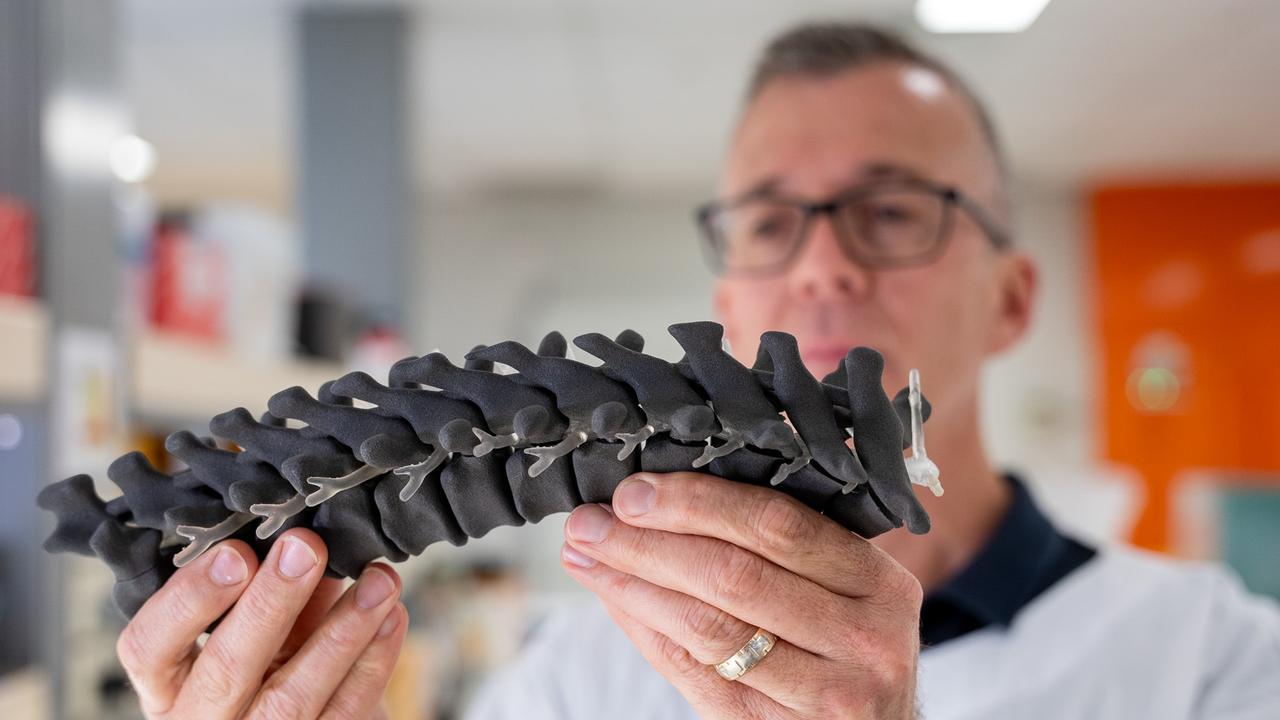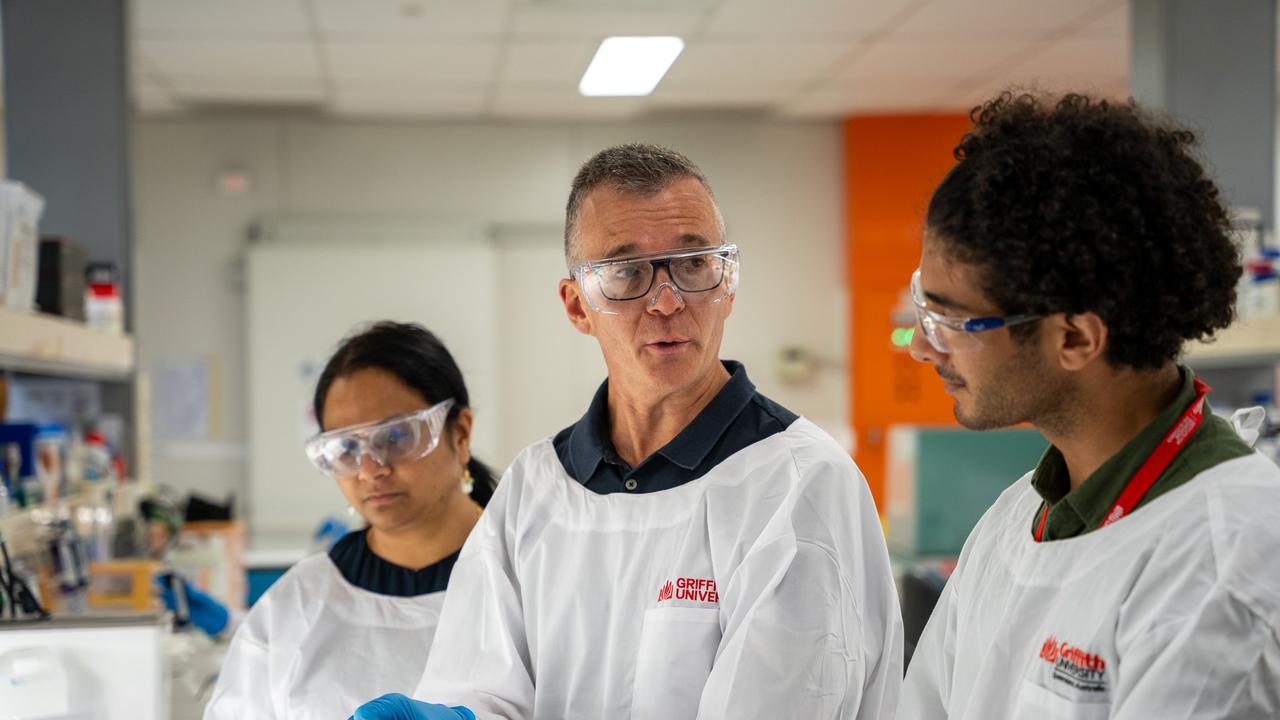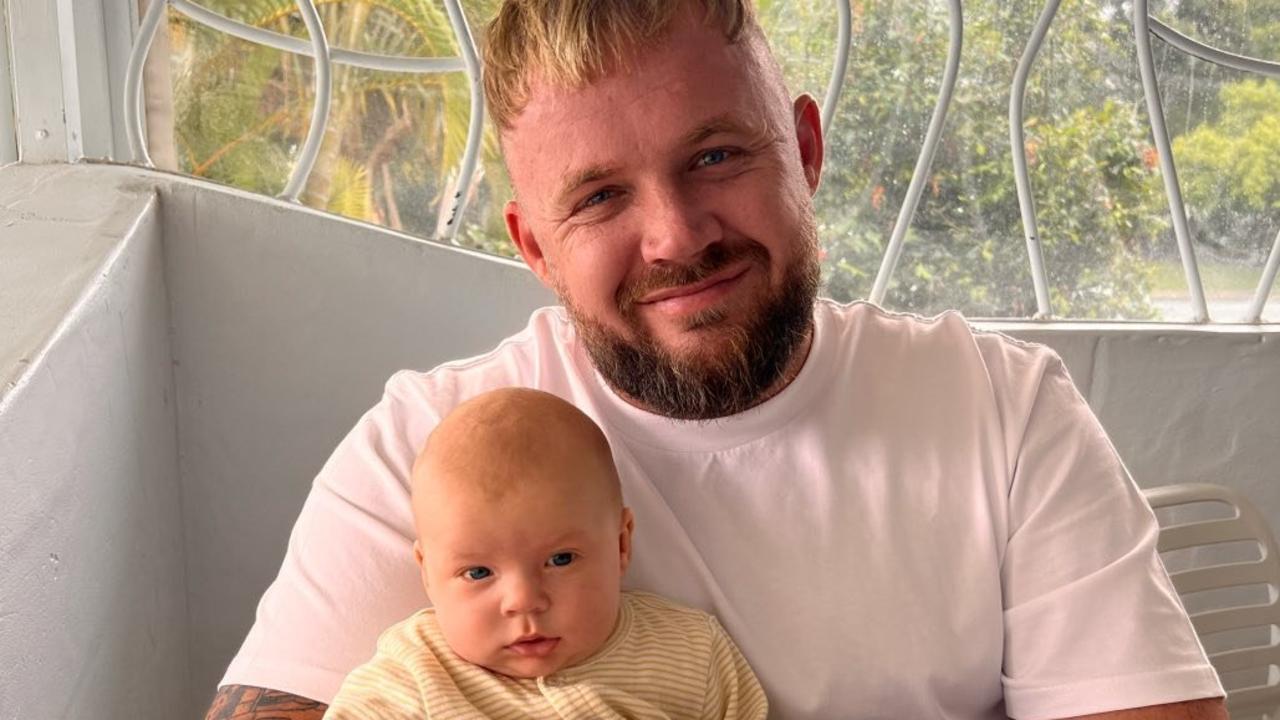Qld scientists close to a cure for paralysis
Queensland scientists are on the brink of a long-sought-after cure for paralysis, and it’s all thanks to groundbreaking work involving nerve cells from the patient’s nose.

QLD News
Don't miss out on the headlines from QLD News. Followed categories will be added to My News.
Queensland scientists are on the brink of a long-sought-after cure for paralysis with a world-first human trial offering hope to millions with spinal cord injuries across the globe.
The trial, which will begin in early 2025, will test the efficacy and safety of the groundbreaking transplantation of olfactory nerve cells from the patient’s nose into the spinal cord to promote new nerve connections — a result of the legacy research of Australian of the Year Professor emeritus Alan Mackay-Sim who died last year.
Griffith University professor James St John, who is leading the research team, said: “Historically we’ve viewed a spinal cord injury as an incurable ailment that meant a person
spent the rest of their life immobile, but through this trial we are hopeful for life-changing
treatment allowing them to move and feel again.
“The potential impact on the paralysis community is extraordinary.”
The hope is to help people regain some sense of movement or functionality in their body whether it’s breathing unassisted or regaining use of their fingers.
The trial is a blinded and randomised control study which will test the olfactory nerve bridge transplantation combined with long-term intensive rehabilitation.
More than 20,000 Australians live with spinal cord injury and another 300 or more suffer a spinal cord injury each year.
Professor St John, who is head of Griffith’s Clem Jones Centre for Neurobiology and Stem Cell Research, said the high purity cells and innovative nerve bridges are the critical components of the therapy.

“Despite decades of worldwide research to find a treatment for spinal cord injury, there is still no clinically available treatment,” he said.
“Our innovative nerve bridges, combined with the high purity olfactory cells, offer what we think is the best hope for treating spinal cord injury.
“The preclinical research has clearly demonstrated the olfactory nerve bridges are effective in repairing spinal cord injury in animal models.”
The world-first Nerve Bridge Transplantation and Rehabilitation Human Clinical trials have been made possible by funding from Motor Accident Insurance Commission (MAIC), the Perry Cross Spinal Research Foundation, the Clem Jones Foundation, NHMRC, MRFF, and the dedicated spinal injury community.
Perry Cross, who became a C2 ventilated quadriplegic after a rugby accident in 1994, has
dedicated his life to finding a cure for paralysis.
“It is incredible that we are now on the cusp of developing a treatment, which may allow us to repair the damage to the spinal cord and regain function,” Mr Cross said.
“It would be life changing for any of the participants in this trial to regain the ability to stand and hug a loved one again, to feel again,” he said.
To learn more about the application process email Griffith University
More Coverage
Originally published as Qld scientists close to a cure for paralysis










